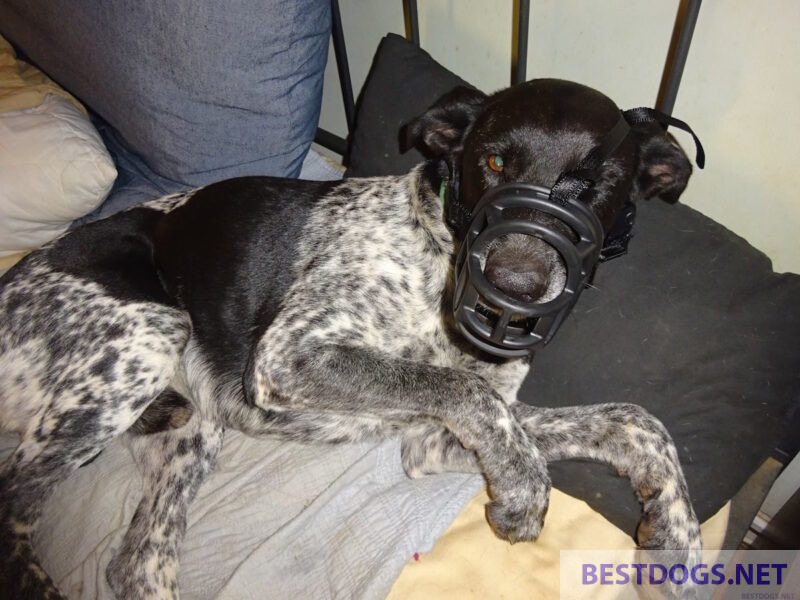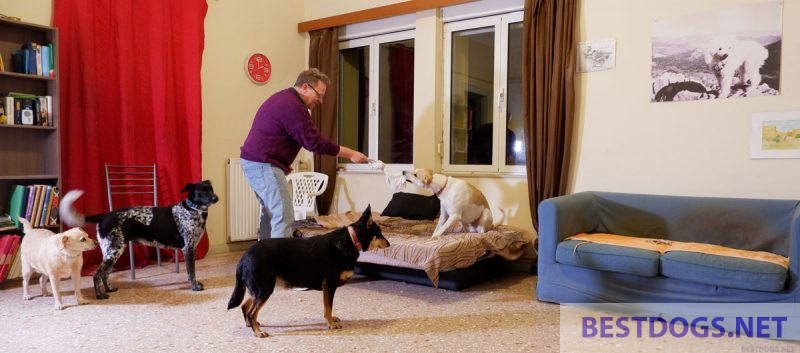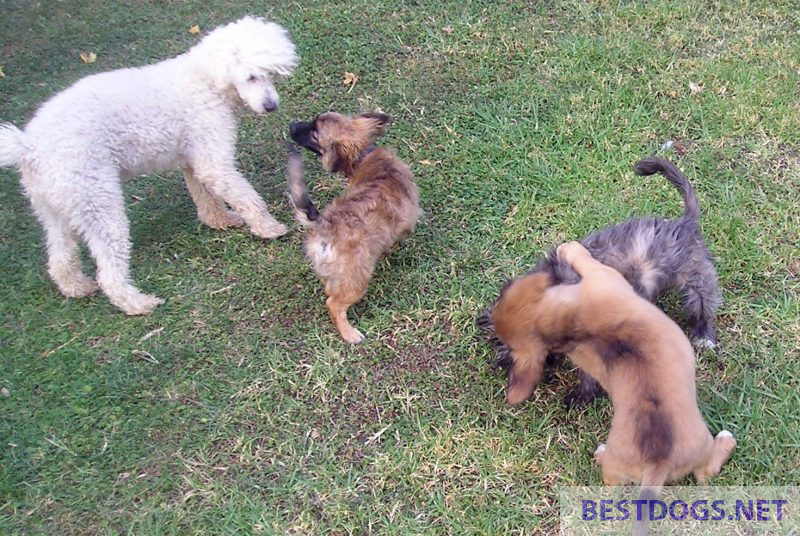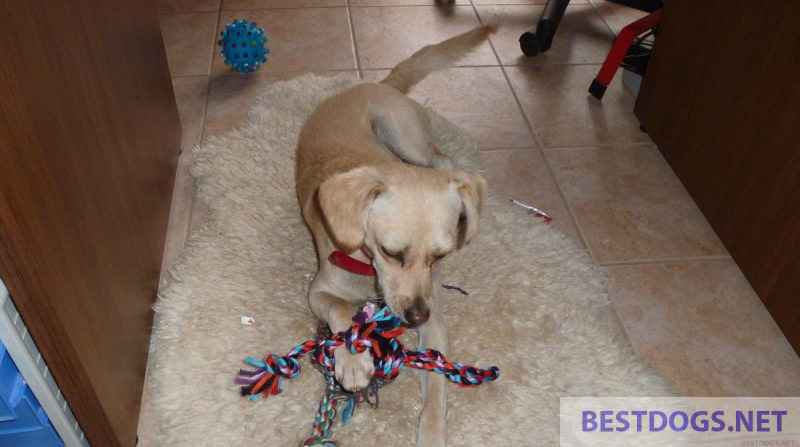Dog care through grooming.
Grooming, cutting, washing, trimming claws, cleaning ears and much more.
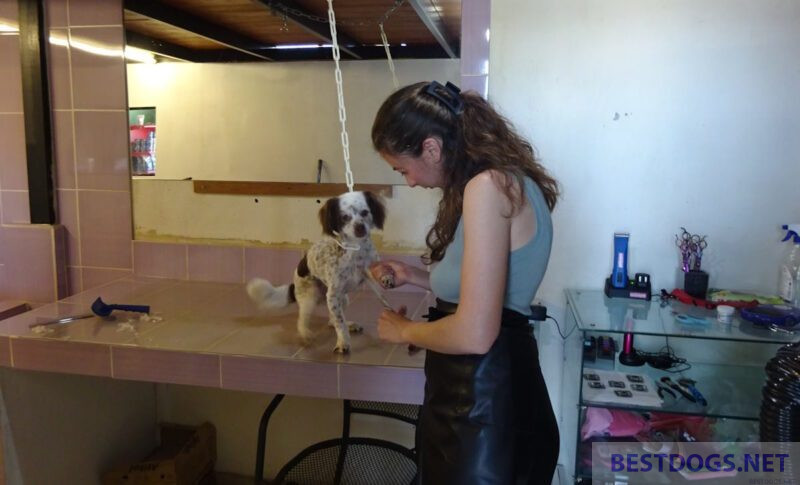
Good grooming helps to keep your dog looking and feeling good. Routine grooming also allows you to check your dog’s coat, teeth, eyes, ears and nails for signs of problems. How often you need to groom your dog depends on its size, breed and coat type.
While good hygiene habits are essential for a healthy dog, unlike humans, most dogs do not require daily hygiene and grooming habits. What is required and how often depends on the breed. The Afghan Hound, Poodle and Komondor – to name but a few – require regular grooming (but the effort is definitely worth it), while breeds such as the Beagle, Weimaraner and Boxer allow a little more freedom when it comes to grooming. Hygiene practices such as teeth brushing, ear cleaning, claw trimming and brushing are certainly important aspects of regular dog grooming, regardless of breed.
Professional groomers, professional dog walkers and some vets are well trained in dog grooming, so you can rest assured that your dog is in good hands. However, it is still useful for dog owners to learn how to groom their dog to keep him looking good between visits to the groomer.
One of the best sources of information on grooming is your dog’s breeder. A certified breeder often has a wealth of knowledge on all topics related to their breed, including grooming tips and the equipment needed to do a good job.
Dog Grooming: Tips and Techniques for a Shiny Coat
Table of Contents
Dog grooming is an essential aspect of pet care that involves maintaining a dog’s hygiene and physical appearance. Grooming is not only important for aesthetic purposes but also for the overall health and well-being of the dog. Regular grooming sessions can help prevent skin infections, matting, and other health issues.
Dog grooming involves a variety of tasks such as bathing, brushing, trimming, and nail clipping. The frequency of these tasks depends on the breed, size, and coat type of the dog. For example, dogs with long hair require more frequent brushing and trimming than dogs with short hair. Similarly, dogs that spend a lot of time outdoors or have a tendency to roll in dirt require more frequent bathing.
Professional dog grooming services are available for pet owners who do not have the time or skills to groom their dogs themselves. These services offer a range of grooming options such as full grooming, which includes all grooming tasks, or specific services such as nail clipping or ear cleaning. Professional groomers have the necessary tools and experience to ensure that the grooming process is safe and effective for the dog.
Understanding Dog Grooming
Grooming Essentials
Dog grooming is an essential aspect of pet care that involves maintaining the hygiene and appearance of dogs. Grooming can be done at home or by a professional groomer, and it includes activities such as bathing, brushing, trimming, and nail clipping. Regular grooming helps to keep dogs healthy, happy, and comfortable.
Bathing is an essential part of grooming that helps to remove dirt, debris, and odors from the dog’s coat. It is recommended to bathe dogs every 4-6 weeks, depending on their activity level and coat type. Brushing helps to remove loose fur, tangles, and mats from the dog’s coat and promotes healthy skin and coat. It is recommended to brush dogs at least once a week, or more frequently for dogs with long hair.
Trimming is another important aspect of grooming that involves cutting the dog’s hair or fur to a desired length. It is essential to trim the hair around the dog’s eyes, ears, and paws to prevent irritation and infections. Nail clipping is also important to prevent overgrowth and discomfort for the dog.
Health Benefits
Regular grooming offers numerous health benefits for dogs. Grooming helps to detect and prevent skin infections, parasites, and other health problems. It also promotes healthy skin and coat, reduces shedding, and prevents matting and tangling. Grooming also helps to improve blood circulation and reduce stress and anxiety in dogs.
Behavioral Considerations
Grooming can also have behavioral benefits for dogs. It helps to strengthen the bond between the dog and the owner and promotes positive reinforcement. Grooming also helps to reduce destructive behavior and anxiety in dogs and promotes good behavior and obedience.
In conclusion, dog grooming is an essential aspect of pet care that offers numerous benefits for dogs. Regular grooming helps to maintain the hygiene and appearance of dogs and promotes their health and well-being.
Preparing for Grooming
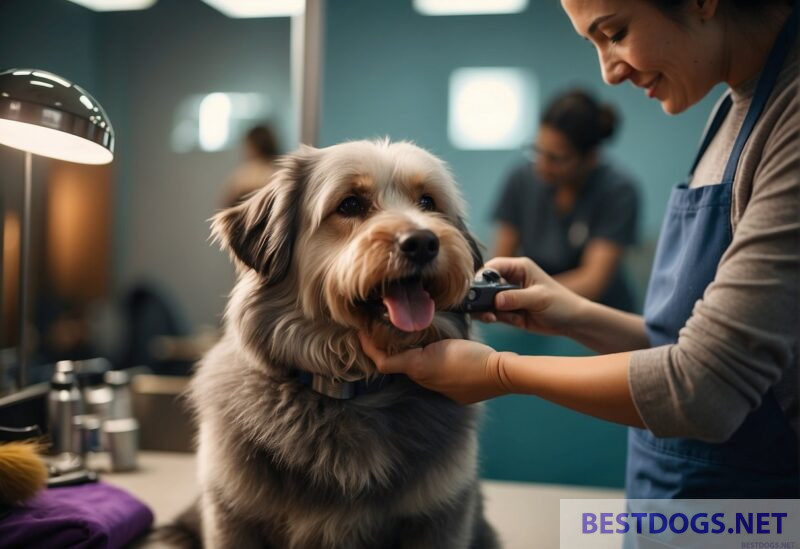
Before starting the grooming process, it is essential to prepare the environment, tools, and equipment and conduct a pre-grooming health check to ensure the dog’s safety and comfort.
Grooming Environment
The grooming environment should be clean, dry, and well-lit. The room should be free of any hazards that could harm the dog, such as sharp objects or electrical cords. The temperature should be comfortable for the dog, neither too hot nor too cold. It is also essential to maintain a calm and quiet environment to help the dog feel relaxed during the grooming process.
Tools and Equipment
The right tools and equipment are crucial for a successful grooming session. Some essential tools include a brush, comb, scissors, nail clippers, and shampoo. It is essential to ensure that the tools are clean, sharp, and in good condition before starting the grooming process. Using dull or dirty tools can cause discomfort or even injury to the dog.
Pre-Grooming Health Check
Before starting the grooming process, it is essential to conduct a pre-grooming health check to ensure that the dog is healthy and ready for grooming. The health check should include examining the dog’s skin, coat, eyes, ears, nose, and mouth for any signs of irritation, infection, or injury. It is also essential to check the dog’s temperature, pulse, and respiration rate to ensure that they are within normal ranges. If any health issues are detected, it is best to postpone the grooming session and seek veterinary care.
By following these steps, dog owners can ensure that their pets are comfortable and safe during the grooming process.
Basic Grooming Techniques
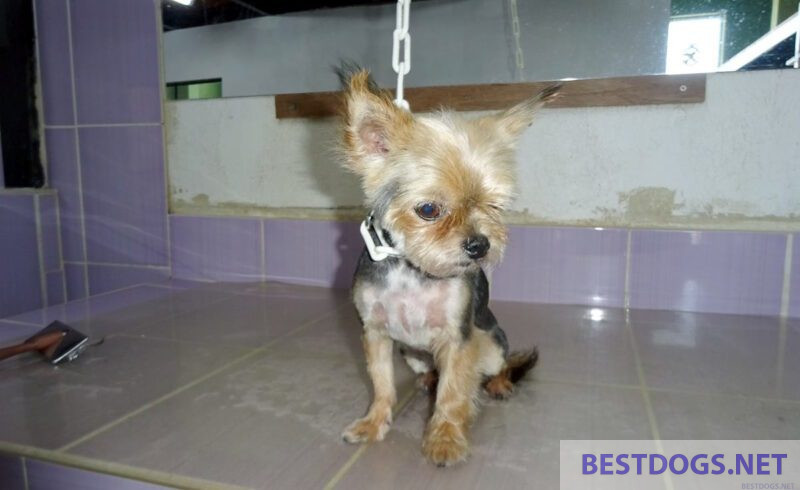
Brushing and Combing
Brushing and combing your dog’s fur regularly is essential to maintain their coat’s health and appearance. It helps to remove loose hair, dirt, and debris, preventing matting and tangling. Different breeds require different types of brushes and combs, so it’s essential to choose the right one for your dog’s coat.
For example, a slicker brush is ideal for dogs with long hair, while a bristle brush works best for short-haired breeds. A comb with wide teeth is suitable for removing tangles, and a fine-toothed comb is ideal for removing debris and fleas.
When brushing and combing your dog, it’s essential to be gentle and avoid pulling on the fur. Start at the head and work your way down, using long, smooth strokes. Pay attention to the areas where matting and tangling are most common, such as behind the ears, under the legs, and around the tail.
Bathing Procedures
Bathing your dog regularly helps to keep their coat clean and healthy. However, it’s essential to use the right shampoo and follow the correct bathing procedures to avoid skin irritation and other issues.
Before bathing your dog, brush their coat to remove any loose hair and tangles. Use lukewarm water and wet your dog thoroughly, avoiding their face and ears. Apply a small amount of dog shampoo, lather it up, and rinse thoroughly.
After rinsing, use a towel to dry your dog, starting at the head and working your way down. Avoid using a hairdryer, as it can be too hot for your dog’s skin. If your dog has long hair, you can use a slicker brush to remove any tangles while drying.
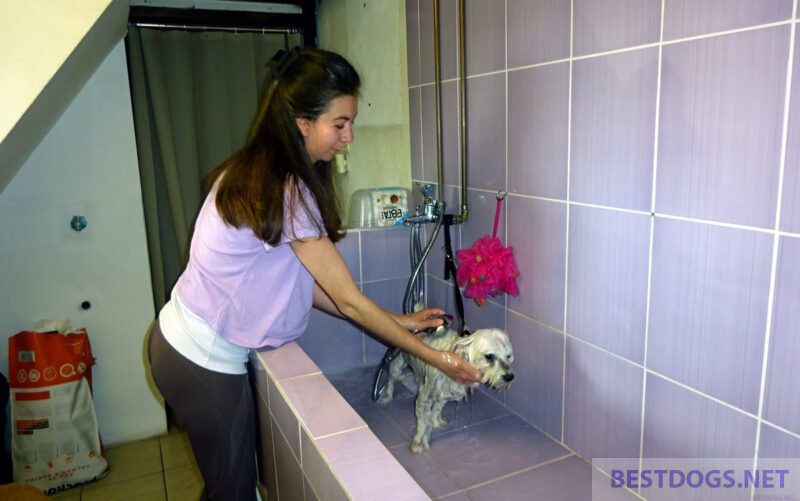
Nail Trimming
Trimming your dog’s nails is essential to prevent overgrowth, which can cause discomfort and pain. It’s essential to use the right tools and techniques to avoid cutting the quick, which can cause bleeding and pain.
To trim your dog’s nails, use a pair of dog nail clippers and hold their paw firmly but gently. Cut the nail at a slight angle, avoiding the quick, which is the pink part of the nail that contains blood vessels. If you accidentally cut the quick, apply some styptic powder to stop the bleeding.
Regular nail trimming helps to keep your dog’s nails at a healthy length, preventing discomfort and pain while walking or running.
Advanced Grooming Skills
Hair Cutting and Styling
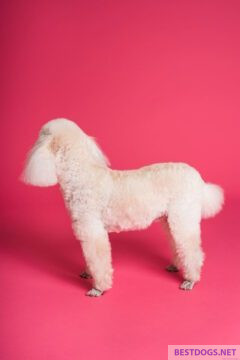
Advanced grooming skills include hair cutting and styling, which can be done at home or by a professional groomer. It is important to use the right tools and techniques to ensure a safe and comfortable grooming experience for the dog. Clippers, scissors, and combs are some of the tools that are commonly used for hair cutting and styling.
When cutting hair, it is important to have a steady hand and to use the right technique. Clippers should be used in the direction of hair growth, and scissors should be used to trim hair around the face, feet, and tail. It is important to avoid cutting too close to the skin to prevent cuts and nicks.
Styling the hair can be done by using different techniques such as trimming, shaping, and blending. This can help to give the dog a unique look and enhance its appearance.
Ear Cleaning
Ear cleaning is an important part of dog grooming, as it can help to prevent infections and other ear-related problems. It is important to use the right tools and techniques to ensure a safe and effective cleaning experience.
Before cleaning the ears, it is important to inspect them for any signs of redness, swelling, or discharge. Cotton balls, ear cleaning solution, and a towel are some of the tools that are commonly used for ear cleaning.
To clean the ears, the cotton ball should be soaked in the cleaning solution and gently inserted into the ear canal. The ear should be massaged gently to help distribute the solution, and then the excess solution should be wiped away with a towel.
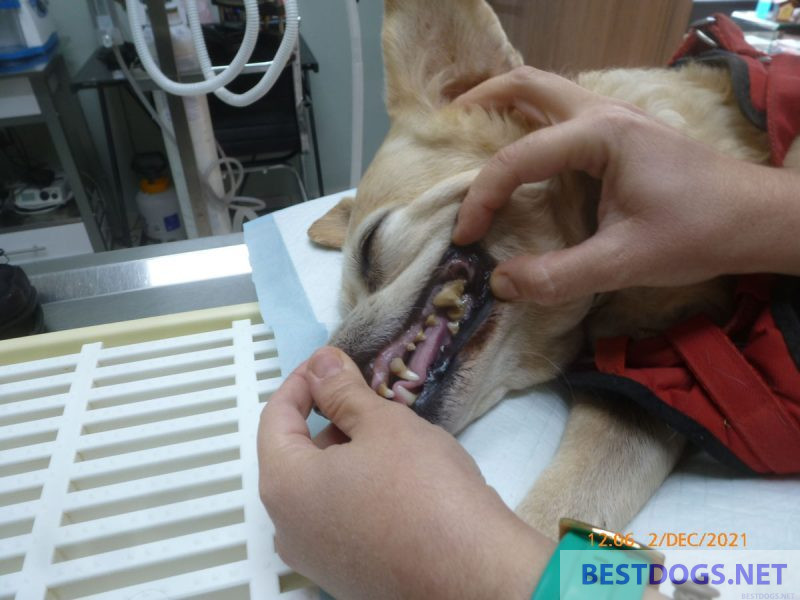
Dental Care
Dental care is an important part of dog grooming, as it can help to prevent dental problems such as plaque, tartar, and gum disease. It is important to use the right tools and techniques to ensure a safe and effective cleaning experience.
To clean the teeth, a toothbrush and toothpaste that is specifically designed for dogs should be used. The toothbrush should be angled at a 45-degree angle and moved in a circular motion to help remove plaque and tartar.
It is important to brush all of the teeth, including the back molars, and to avoid brushing too hard to prevent gum irritation. Dental chews and toys can also be used to help promote dental health and reduce bad breath.
Grooming Different Breeds
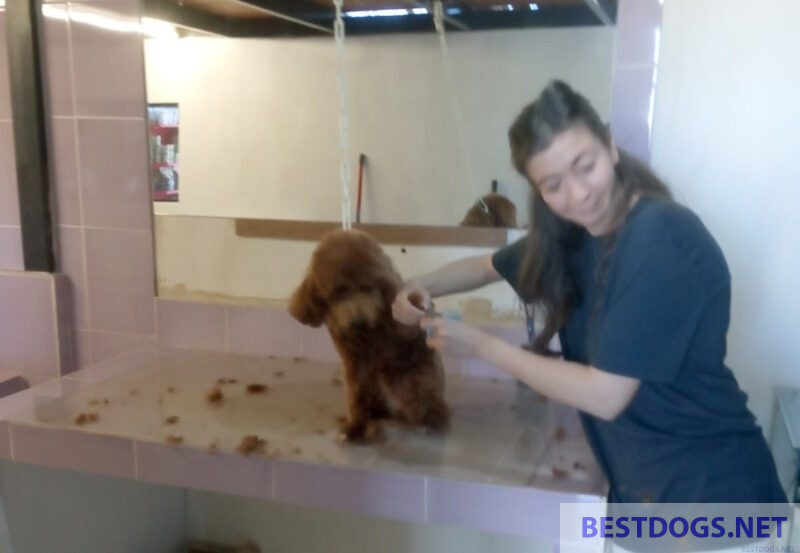
Breed-Specific Grooming
Different breeds require different grooming techniques to maintain their appearance and health. For instance, long-haired breeds like the Shih Tzu and Yorkshire Terrier require daily brushing to prevent matting and tangling. Breeds with curly or wiry coats like the Poodle and Schnauzer need regular trimming to avoid matting and maintain their distinctive look. Breeds with smooth coats like the Beagle and Boxer require minimal grooming, but regular bathing and brushing can help keep their coats shiny and healthy.
Coat Types and Care
Understanding a dog’s coat type is crucial in determining the appropriate grooming techniques. Dogs with double coats like the Husky and Chow Chow require regular brushing to remove loose fur and prevent matting. Dogs with single coats like the Greyhound and Doberman Pinscher shed less but still require regular brushing to remove loose fur and prevent skin irritation. Dogs with wiry coats like the Wire Fox Terrier and Airedale Terrier need regular stripping to maintain their coat texture.
In addition to regular brushing and trimming, it is important to keep a dog’s nails trimmed and ears clean to prevent infections. Breeds with droopy ears like the Basset Hound and Cocker Spaniel are prone to ear infections and require regular cleaning. Breeds with fast-growing nails like the Dachshund and Chihuahua need regular nail trims to avoid overgrowth and discomfort.
Overall, proper grooming is essential for a dog’s health and well-being. By understanding a dog’s breed and coat type, owners can provide the appropriate grooming techniques to keep their furry friends looking and feeling their best.
Professional Grooming Services
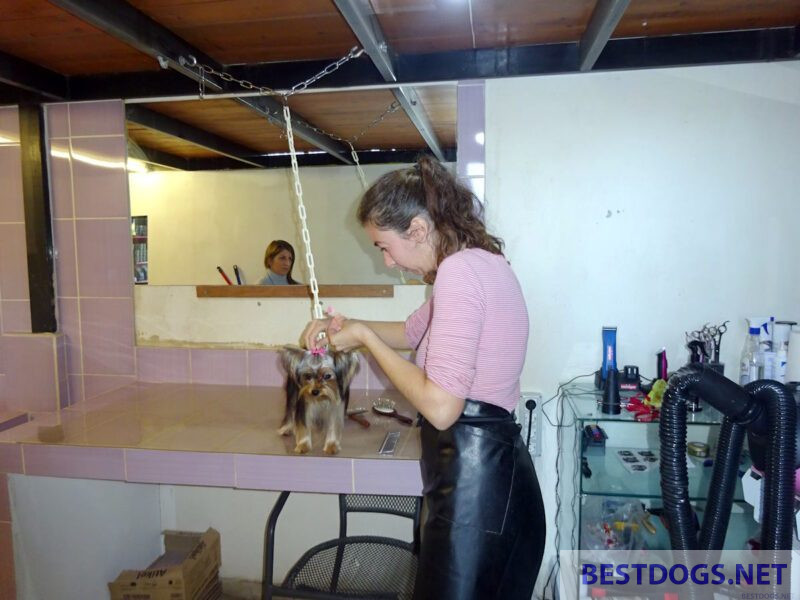
Choosing a Professional Groomer
When it comes to grooming your dog, it’s important to find a professional groomer who is experienced and knowledgeable in their field. One way to find a reputable groomer is to ask for referrals from friends or family members who have used a grooming service before. Another option is to check online reviews and ratings of local groomers.
For the area around the town of Aghios Nikolaos on Crete, Marianthi’s professional grooming service at her dog parlour Pets in the City, near the hospital (Phone ++30-2841-026222) is recommended. Her customers come from all over the surrounding area, from Malia to Ierapetra, to have their dogs groomed there.
Once you have a list of potential groomers, it’s important to visit the grooming salon and speak with the staff. This will give you an idea of the cleanliness and professionalism of the salon. You can also ask the groomer about their experience and training, as well as any certifications they may have.
Grooming Service Options
Professional grooming services offer a variety of options to keep your dog looking and feeling their best. Some common services include:
- Bathing and drying
- Hair trimming and styling
- Nail trimming and filing
- Ear cleaning
- Teeth brushing
Many groomers also offer specialized services such as flea and tick treatments, de-shedding treatments, and skin and coat treatments.
When choosing a grooming service, it’s important to consider your dog’s specific needs and any health concerns they may have. You should also discuss your preferences with the groomer to ensure that you are both on the same page regarding the desired outcome.
Overall, professional grooming services can be a great way to keep your dog healthy, happy, and looking their best. By choosing a reputable groomer and discussing your dog’s specific needs, you can ensure that your furry friend receives the best possible care.
DIY Grooming Tips
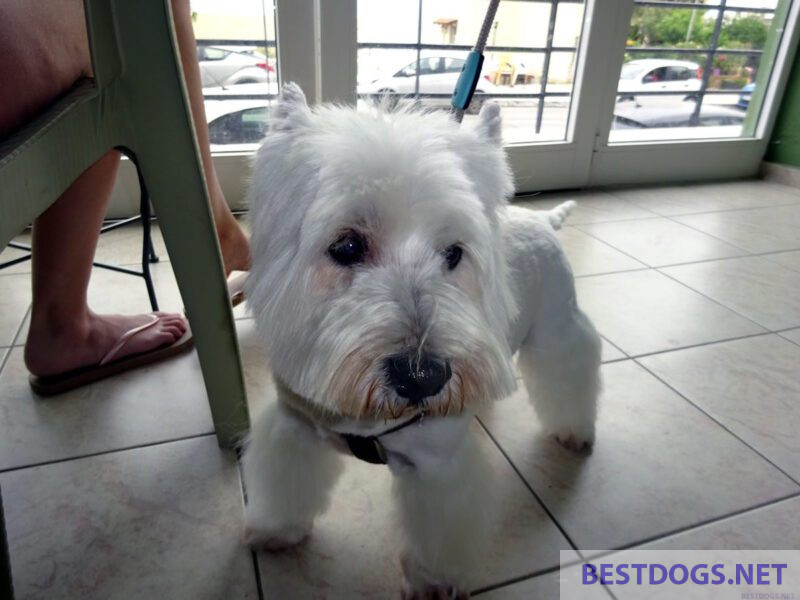
Home Grooming Safety
Grooming your dog at home can be a great way to save money, but it’s important to take safety precautions to avoid injuring your furry friend. One of the most important things to keep in mind is to never use scissors or clippers if you’re not confident in your ability to do so safely. Always start by using a brush or comb to remove any tangles or mats in your dog’s fur.
It’s also important to choose the right grooming tools for your dog’s coat type. For example, a slicker brush is great for removing loose fur from a long-haired dog, while a pin brush is better for a short-haired dog. Always make sure that your grooming tools are clean and well-maintained to avoid injuring your pet.
Cost-Effective Grooming
If you’re looking to save money on dog grooming, there are a few cost-effective tips to keep in mind. First, consider investing in a good quality grooming brush. Regular brushing can help keep your dog’s coat healthy and shiny, and it’s a great way to bond with your furry friend.
Another cost-effective grooming tip is to bathe your dog at home. You can use a gentle dog shampoo and warm water to bathe your pet, but be sure to rinse thoroughly to avoid any skin irritation. Finally, consider trimming your dog’s nails at home. While it can be intimidating at first, with practice and patience, you can learn to safely trim your dog’s nails at home, saving you money on regular trips to the groomer.
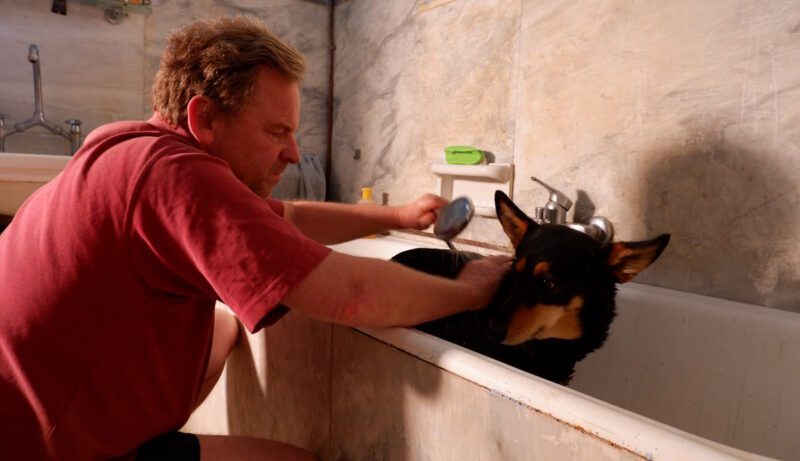
Common Grooming Challenges
Dealing with Anxiety
Dog grooming can be a stressful experience for some dogs, especially those who suffer from anxiety. Signs of anxiety may include shaking, panting, and restlessness. To help calm an anxious dog during grooming, it is important to create a relaxing environment. This can be achieved by playing calming music, using aromatherapy, and providing a comfortable and secure space for the dog. It is also important to introduce grooming tools gradually and reward the dog with treats and praise for good behavior.
Handling Difficult Dogs
Some dogs may be difficult to groom due to their temperament or behavior. Aggressive dogs may require sedation or the use of a muzzle to ensure the safety of both the dog and the groomer. To handle difficult dogs, it is important to have proper training and experience. Groomers should also be patient and use positive reinforcement techniques to encourage good behavior. It may also be helpful to break the grooming process into smaller, manageable steps to make it less overwhelming for the dog.
